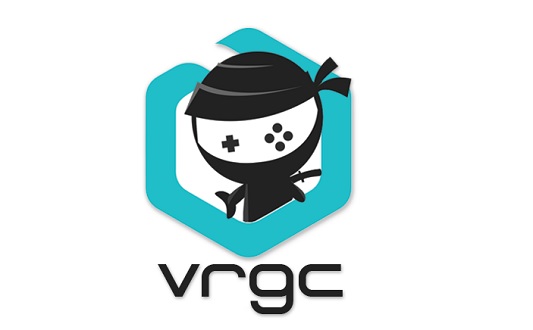After Tomonobu Itagaki’s revival of the Ninja Gaiden series on Xbox in 2004, the games have gained a legion of dedicated fans as they fill the shoes of hardcore and traditional ninja character Ryu Hayabusa of the Dragon lineage. With two games (including the remixed Ninja Gaiden Black) on Xbox and the bloody Ninja Gaiden 2 on Xbox 360, fans have been desperate for another slice of the action. PS3 gamers have been somewhat spoilt with the Sigma versions and so moving into 2012, Tecmo and Team Ninja under the wing of new producer Yosuke Hayashi bring forth a new adventure for the tenacious and highly mobile ninja character.
It’s obvious from the offset that rather than completely mimic Itagaki’s approach with what could be considered a bit of an elitist game, Hayashi’s direction makes for a more digestible experience for gamers who perhaps found the previous games a little too hardcore for their own good. However, in doing so, hardcore fans of the series might not be so welcoming of the changes made. Ninja Gaiden III looks the part and in many ways feels very much like a Ninja Gaiden game, this can’t be questioned, but what is perhaps noticeable is how many elements of the past have been stripped away or refined so as not to interfere with the flow of the gameplay.
Ryu starts his adventure in London taking on a terrorist threat under the watchful gaze of the iconic London Eye, and it’s here where players are introduced to the new direction on offer. The opening moments have Ryu performing quick time events (QTE) which range from hammering the X button or tapping it once when prompted. The QTE features throughout the game from start to conclusion and add a bit of interactive cinematic direction to fights and scenes not really seen before. There’s no doubt that Ryu is still one of the coolest ninjas around and the QTE moments simply exemplify this fact as he dives through the air chopping up humans, mechanical devices and strange beasts en mass. Whilst the QTEs are very much a mainstay of the game’s new direction, they aren’t really that obtrusive where you’re continually hammering away at buttons. In fact, they are generally quite tame compared to some other games, so that’s a plus point.
The combat itself has all the hallmarks of past endeavours as Ryu has at his disposal several moves and combos to dish out, and the real element of flamboyant play comes from learning these rather than hammering away at the X and Y buttons through every encounter – whilst it’s very much possible to do this, it’s far more rewarding if a bit of premeditated precision is employed. It’s not all plain sailing though, because amidst some extremely stylized camera angles, scenes and effects, the combat does come unstuck on occasion especially in regards to how the auto lock on feature has a mind of its own. In many cases, the lock on takes some of the precision away leading into some frustrating moments if you’re attempting to be a bit more “flashy” with your attacks. Another gripe is with the enemy AI – who come in a reasonable variety of forms large and small – which although ranges from dumb to quite intelligent, is far less challenging than either of the previous games; to the point where Ryu comes across as a bit over-powered at times. It’s Ryu’s strength that keeps the game from entering realms of pad throwing frustration with its more simplified approach that ditches the encumbering mechanics that complicate matters, and proudly adopts an arcade like experience fitting for a wider audience. Ryu only has one dragon nimpo for example which is set based on the current encounter rather than stacked and saved, the orb drawing ultimate techniques are gone in favour of a glowing possessed arm that unleashes a furious flurry of attacks. There are also moments where Ryu gets into a zone and can one hit kill enemies in quick succession. Despite the lack of depth to the combat, the style is simply overflowing, gratifying and breathtaking to watch at times.
Fans of the previous games will notice a lot of additional changes to the core game and so to put these a bit more into perspective, one has to consider that the whole gameplay has been streamlined to suit players who want to just dive into the action rather than mess around with menus. You’re given one weapon type which gets replaced as you progress through the story and a bow – although some claws and a scythe will be available as DLC. Collecting orbs to level up weapons, opening chests, and exploring for items are now a thing of the past. It’s an interesting direction as some might argue the levelling up/shop element made for some great underlying themes, whereas others might view them as unnecessary fluff. Either way, Ryu and the story pushes forwards constantly, reiterating that there’s really no need to hit the start button for any momentary pauses.
In regards to the story, it’s largely forgettable and whilst it interjects with the gameplay constantly, acts as reminder as to why Ryu has a glowing and cursed arm, and why he’s killing humans left right and center. There are some “cute” moments to be had later on in the story, but nothing remotely hinting at severe menace, cleverness or thought provoking. For the impatient, cut scenes are skippable, and what’s perhaps most welcome is they are devoid of any QTEs for the most part which could have been a killer if the cut scenes were littered with them.
Ryu gets to travel to various locales across the globe, from arid deserts in Saudi Arabia, to jungles, cities and much more. The presentation is pretty good, but a lack of interaction lets things down. It would have been great for example being able to chop down the foliage as one fights in the jungle. As it stands, fights revolve around boxed in areas, leaving little room for any inanimate distractions. As already mentioned, there are some highly stylized fight locations that are stunning and extremely cool to fight in, however, a lot of the interior locations are a bit on the dull side in comparison. The character models are generally well presented, and Ryu’s animations are spot on as he jumps around the screen. The camera can be a little off some times, and when the blood is flowing and movement extremely fast, it can get a bit confusing as to what is actually happening as the screen becomes filled with a merging mass of colours.
Sadly the ultra violence has been toned down, as it almost feels like a censored version is being played. This is a big step backwards from the previous game, because every slice and dice implies gruesome results, but you never get to see it. It’s not clear why a game with so much blood dropped the decapitations and dismemberment, but something is lost as a result which is a shame.
The game’s audio is fairly limited and does the job of conveying the action and cinematic direction in the cutscenes. There’s perhaps an overuse of banter from the enemies as you fight, which starts off as an interesting mechanic, but begins to grate as phrases get repeated far too often. The game’s music is very much up tempo in line with the action and serves as suitable background noise to drown out any silence trying to creep into the frantic scenes. It’s neither memorable or intrusive.
Ninja Gaiden 3’s single player offers a fairly lengthy campaign that will keep players hooked for above average game hours. There are other difficulties on offer too, a ninja cinema and records to take a look at. If you’re hooked online – using the game’s online pass – you then have access to the Shadows of the World mode which features co-op play through various trials (which can also be played solo) or head to head in versus mode with other ninjas. There’s a minute amount of customization options thrown in here for good measure. These are welcome distractions and new additions to the Ninja Gaiden series, but how much time you’ll spend here is determined by how much value for money you’re likely to crave from your purchase.
To conclude, Ninja Gaiden III is very much a game that sticks two fingers up at the past and goes directly for the jugular in unabated non-stop action, free from any cluttering distractions. The question is, whether as a player of the previous games you feel the streamlining benefits the game or not. It’s likely the very hardcore dedicated fans won’t find much solace in what’s on offer here as the game is very much going to feel too simplified for them, however, gamers with fresh fingers who might have found the past offerings too much will lap up Ryu’s ease of play and engaging combat readiness at every corner. In a way, Yosuke Hayashi has butchered the Ninja Gaiden series’ roots, but in doing so has opened up the game to be appreciated by a wider audience. This ideal is nothing new in gaming over the last five or so years, and leaves the question as to whether you approve or shake your head in disgust. As a game, Ninja Gaiden III is a polished action adventure – with less emphasis on the adventure – that allows gamers to fill the shoes of one hell of a cool dark ninja character, look cool in doing so and take no prisoners in the process. If you’ve shied away from Ninja Gaiden games in the past then this is very much well worth checking out; if you’re a fan, then only those with the most open of minds are going to garner any rewards here.
8/10




